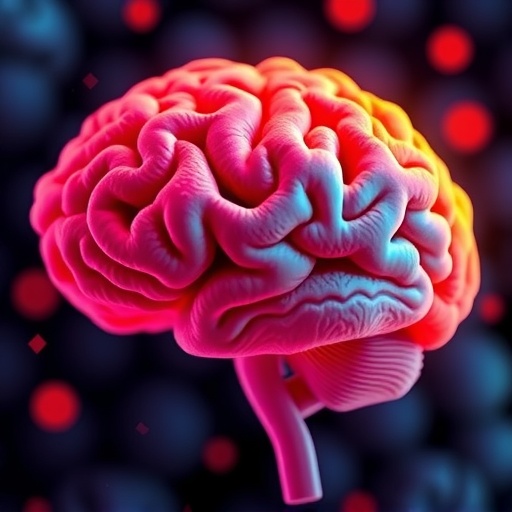
In a groundbreaking leap for chronic low back pain management, Australian researchers have unveiled compelling evidence supporting cognitive functional therapy (CFT) as a highly effective long-term intervention. Published in the prestigious medical journal The Lancet Rheumatology, the findings from the RESTORE trial illuminate how a personalized, seven-session CFT program significantly alleviates pain and enhances function over a sustained three-year period. This comprehensive randomized controlled trial—conducted across leading centers in Sydney and Perth—spotlights a transformative approach to a condition that afflicts millions globally and bears enormous societal and economic burdens.
Chronic low back pain (CLBP) remains a pervasive and stubborn health challenge worldwide. It ranks as the leading cause of disability, with profound implications for quality of life and health care expenditures. Conventional treatments, often dominated by pharmacologic therapy, manual interventions, and surgery, typically deliver only short-lived relief and can pose considerable risks including dependency, invasive complications, or unaddressed underlying factors. The RESTORE trial’s findings mark a significant paradigm shift: emphasizing a biopsychosocial intervention that integrates physical, psychological, and social dimensions into tailored physiotherapeutic care.
At the heart of this intervention lies cognitive functional therapy, a method designed to remodel patients’ relationship with their chronic pain. Delivered by physiotherapists specifically trained in CFT protocols, the program targets maladaptive pain beliefs, fear-induced avoidance behaviors, and disrupted movement patterns. By leveraging cognitive restructuring alongside functional movement retraining, CFT empowers individuals to regain control over their symptoms and daily activities. This strategic patient-centered approach contrasts starkly with the often fragmented and passive care pathways traditionally employed.
.adsslot_SlsD041zoO{width:728px !important;height:90px !important;}
@media(max-width:1199px){ .adsslot_SlsD041zoO{width:468px !important;height:60px !important;}
}
@media(max-width:767px){ .adsslot_SlsD041zoO{width:320px !important;height:50px !important;}
}
ADVERTISEMENT
The RESTORE trial’s rigorous methodology involved randomizing participants with disabling CLBP to receive either CFT or usual care, with the latter encompassing standard physiotherapy, medications, or no structured intervention. Over the course of seven individualized sessions, patients engaged with physiotherapists trained to identify and address the specific cognitive and functional impairments underpinning their pain experience. Results demonstrated statistically and clinically significant reductions in pain intensity and disability scores, sustained impressively for three years post-intervention—a timeframe far exceeding the follow-up periods of most prior research in this domain.
Professor Mark Hancock, lead investigator and Professor of Physiotherapy at Macquarie University, emphasizes the pioneering nature of this work. “This is the first large, high-quality study to examine the long-lasting effects of cognitive functional therapy on chronic low back pain,” Hancock states. The durability of the treatment’s benefits challenges prevailing assumptions that CLBP interventions are transiently effective at best, offering hope for a true shift towards sustainable symptom management and functional restoration.
The biopsychosocial framework underpinning CFT acknowledges that chronic pain is not merely a physical phenomenon but instead a complex interplay of biological and psychosocial factors. Anxiety, fear, and catastrophic thinking often entangle with physical dysfunction, creating a feedback cycle that perpetuates pain sensitivity and disability. Professor Peter O’Sullivan of Curtin University, co-author of the study, describes this cycle as a “vicious spiral” where patients’ protective behaviors inadvertently reinforce chronicity. CFT aims to interrupt this spiral through education and movement-based rehabilitation, effectively “putting patients in the driver’s seat” of their recovery.
Australia’s staggering back pain burden—estimated to affect one in six people and costing the health system approximately $3.4 billion annually—highlights the critical need for scalable, evidence-based treatments such as CFT. The current healthcare landscape, saturated with short-term symptom management strategies including opioids and surgical interventions, rarely addresses pain persistence mechanisms or equips patients with lasting self-management skills. The RESTORE findings argue persuasively for a wholesale reevaluation of health policy and clinical guidelines to prioritize interventions that combine safety, personal empowerment, and sustainability.
Importantly, CFT’s long-term efficacy demonstrated in RESTORE disrupts the entrenched dogma that chronic pain is irreversible or inevitably degenerative. Patients engaging in the therapy exhibited marked improvements in movement confidence and functional capacity, reinforcing the principle that neuroplasticity and rehabilitative progress remain achievable even after years of disability. This insight carries profound implications not only for clinical practice but also for the broader societal understanding of chronic pain as a modifiable condition.
Further technical nuances of the RESTORE trial highlight how CFT’s individualized framework is tailored to the heterogeneous presentations of CLBP. Unlike one-size-fits-all approaches, therapists identify patients’ unique pain triggers, psychosocial stressors, and behavioral patterns before collaboratively designing a treatment plan. This customization ensures relevance and feasibility, promoting adherence and optimizing therapeutic success. The inclusion of movement sensor biofeedback in some trial arms underscores how integrating cutting-edge technology can enhance assessment and patient engagement, though the study found CFT’s core principles to be effective regardless of additional biofeedback.
The ramifications of these findings extend far beyond Australia, offering a scalable model adaptable to diverse healthcare settings worldwide. Considering the global prevalence of low back pain, widespread adoption of CFT could revolutionize clinical outcomes and reduce reliance on invasive or pharmacologic therapies with high side-effect profiles. For policymakers, the evidence provides a clarion call to invest in training physiotherapists in CFT methods, improve accessibility, and reshape reimbursement frameworks to support high-value care.
Academic and clinical communities have long clamored for robust, longitudinal data on chronic pain interventions—research that matches the chronicity of the condition itself. The RESTORE trial answers this call decisively, with its three-year follow-up representing a substantial leap forward in trial duration and methodological rigor. Through this, the study also identifies critical gaps in existing literature and sets a benchmark for future investigations into mind-body and functional therapies.
Looking ahead, the integration of cognitive functional therapy into multidisciplinary pain management programs may pave the way for even greater advances. Combining CFT with psychological interventions such as cognitive-behavioral therapy, targeted pharmacologic regimens, and lifestyle modifications holds promise for holistic treatment of CLBP. Furthermore, ongoing research into neurophysiological mechanisms underlying treatment response will refine personalized therapy and optimize outcomes.
Ultimately, the RESTORE trial’s demonstrated success heralds a new era in chronic low back pain treatment—one where patient empowerment, clinical excellence, and biopsychosocial integration converge to produce durable relief and functional recovery. For the millions trapped in the cycle of pain and inactivity, CFT offers a beacon of hope grounded in solid science and compassionate care.
Subject of Research: People
Article Title: Cognitive functional therapy with or without movement sensor biofeedback versus usual care for chronic, disabling low back pain (RESTORE): 3-year follow-up of a randomised, controlled trial
News Publication Date: 5-Aug-2025
Web References:
https://www.thelancet.com/journals/lanrhe/article/PIIS2665-9913(25)00135-3/fulltext
Keywords: chronic low back pain, cognitive functional therapy, RESTORE trial, physiotherapy, biopsychosocial model, long-term pain management, randomized controlled trial, movement sensor biofeedback, patient empowerment, rehabilitation, chronic pain, health economics
Tags: Australian research on back painbiopsychosocial approach to painchronic low back pain managementcognitive functional therapy effectivenessinnovative pain management strategiesintegrative treatment for back painlong-term back pain reliefmental health and chronic painpersonalized physiotherapy programsrandomized controlled trial on CLBPRESTORE trial findingssocietal impact of chronic pain





